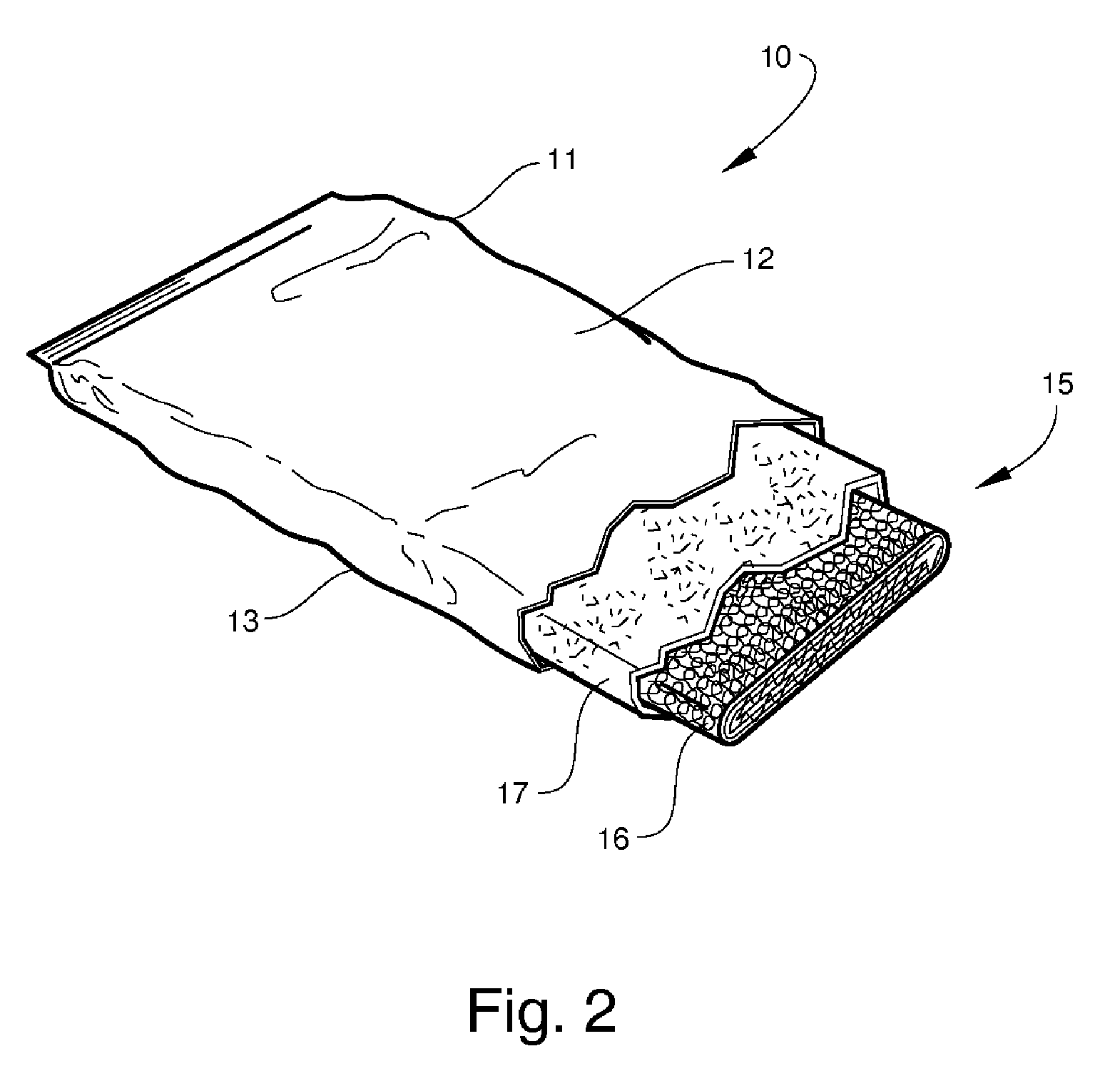Knitted substrate with high and low tenacity yarns for use in bandaging product, bandaging product and method of forming same
a bandaging product and yarn yarn technology, applied in the field of orthopaedic medicine, can solve the problems of low strength-to-weight ratio of casts formed using plaster-of-paris bandages, slow hardening of plaster-of-paris splints, and heavy weight of finished casts, etc., to achieve a smooth surface, high strength-to-weight ratio, and durable under heavy load
- Summary
- Abstract
- Description
- Claims
- Application Information
AI Technical Summary
Benefits of technology
Problems solved by technology
Method used
Image
Examples
Embodiment Construction
[0062] Referring now specifically to the drawings, a medical bandaging product 10 according to the present invention is shown generally in FIG. 1. The medical bandaging product 10 includes a moisture-impervious sleeve 11 formed from two laminated sheets 12 and 13 that are placed in registration and heat sealed along opposite edges. As is shown in FIG. 2, the bandaging product 10 also includes a medical bandage 15 that is maintained in moisture-free conditions within the sleeve 11 until use. The bandage 15 includes a substrate 16. In the embodiment of the invention shown in FIG. 2, the substrate 16 is enclosed within an outer cover 17 formed of a soft, flexible, hydrophobic fiber. However, the bandage 15 may also be formed without the outer cover. As discussed more fully with reference to FIG. 5 below, the substrate 16 is a knitted fabric material formed from elastic and inelastic fibers.
[0063] Although any suitable moisture-resistant material may be used to form the sleeve 11 withi...
PUM
 Login to View More
Login to View More Abstract
Description
Claims
Application Information
 Login to View More
Login to View More - R&D
- Intellectual Property
- Life Sciences
- Materials
- Tech Scout
- Unparalleled Data Quality
- Higher Quality Content
- 60% Fewer Hallucinations
Browse by: Latest US Patents, China's latest patents, Technical Efficacy Thesaurus, Application Domain, Technology Topic, Popular Technical Reports.
© 2025 PatSnap. All rights reserved.Legal|Privacy policy|Modern Slavery Act Transparency Statement|Sitemap|About US| Contact US: help@patsnap.com



